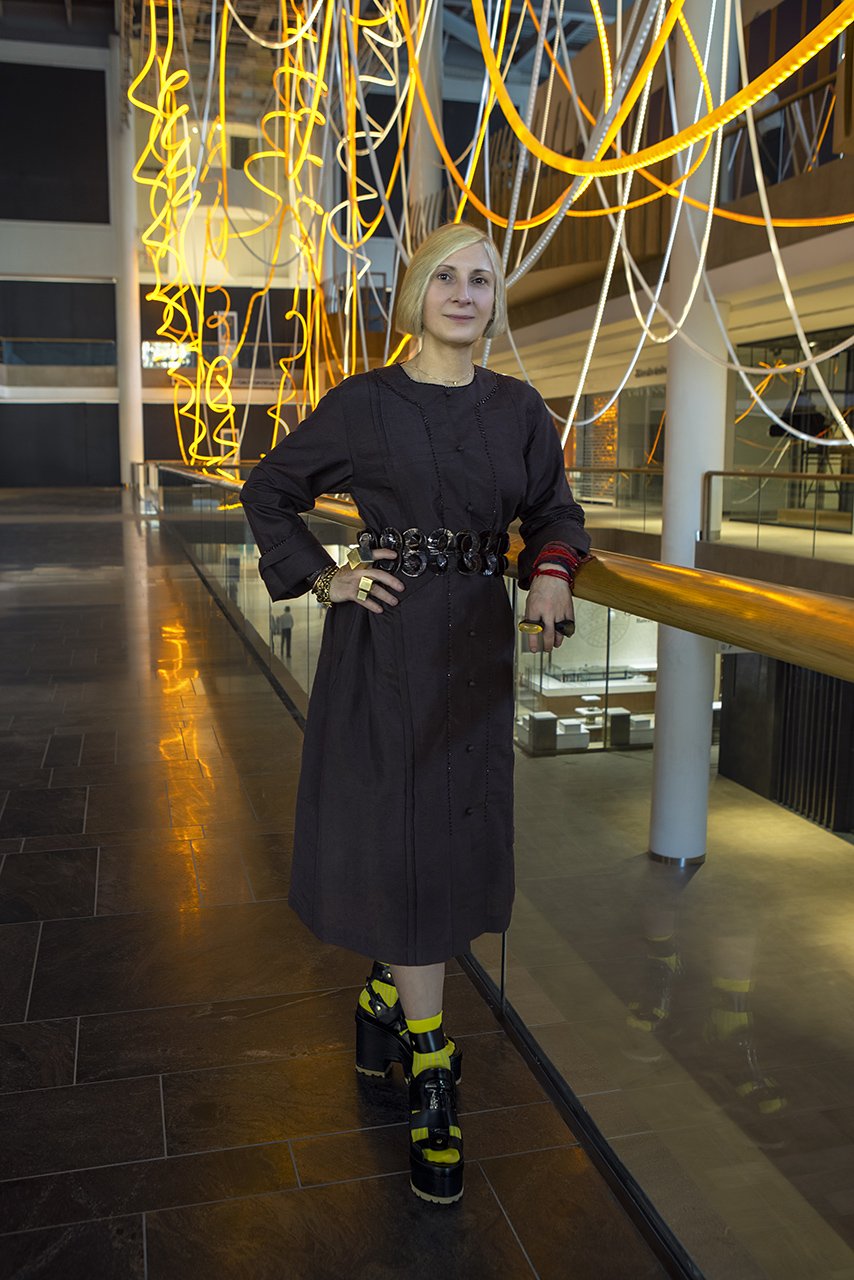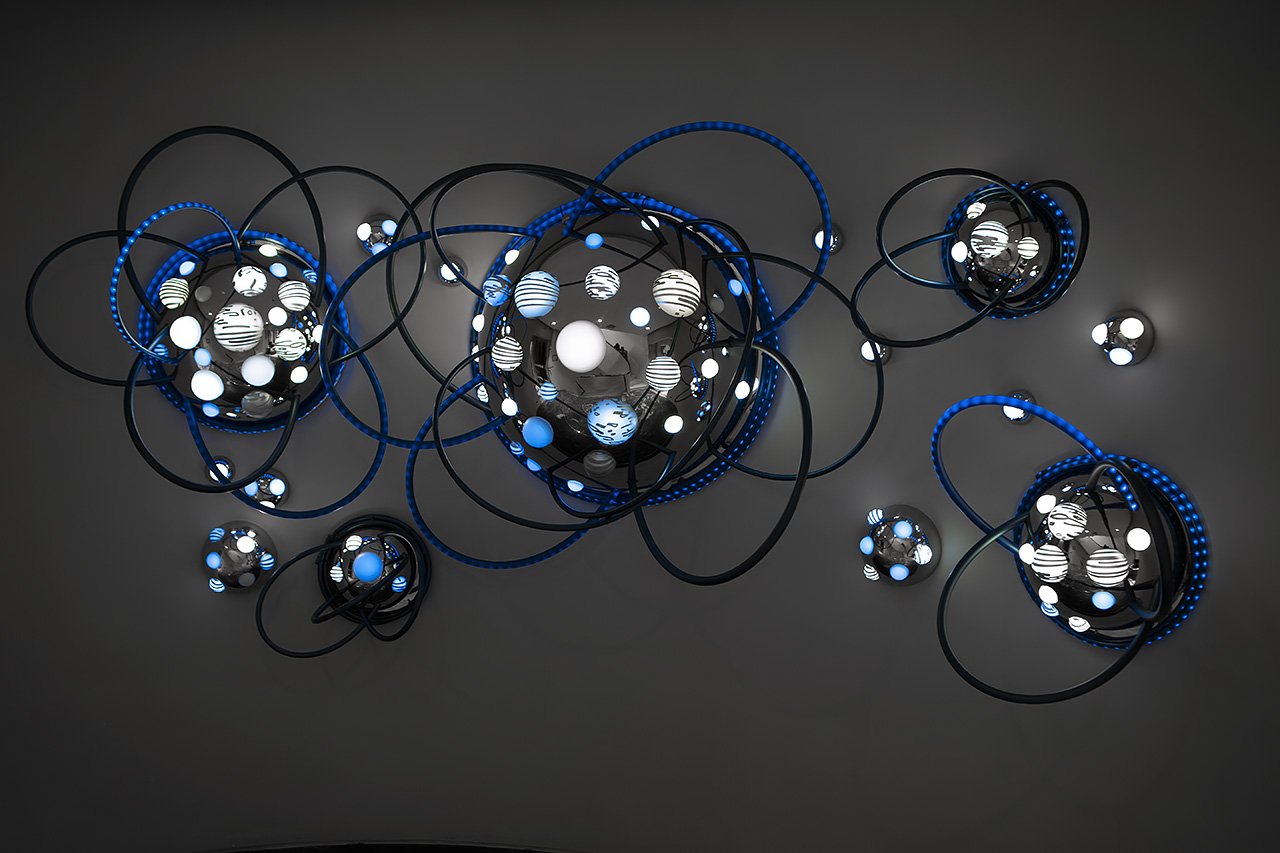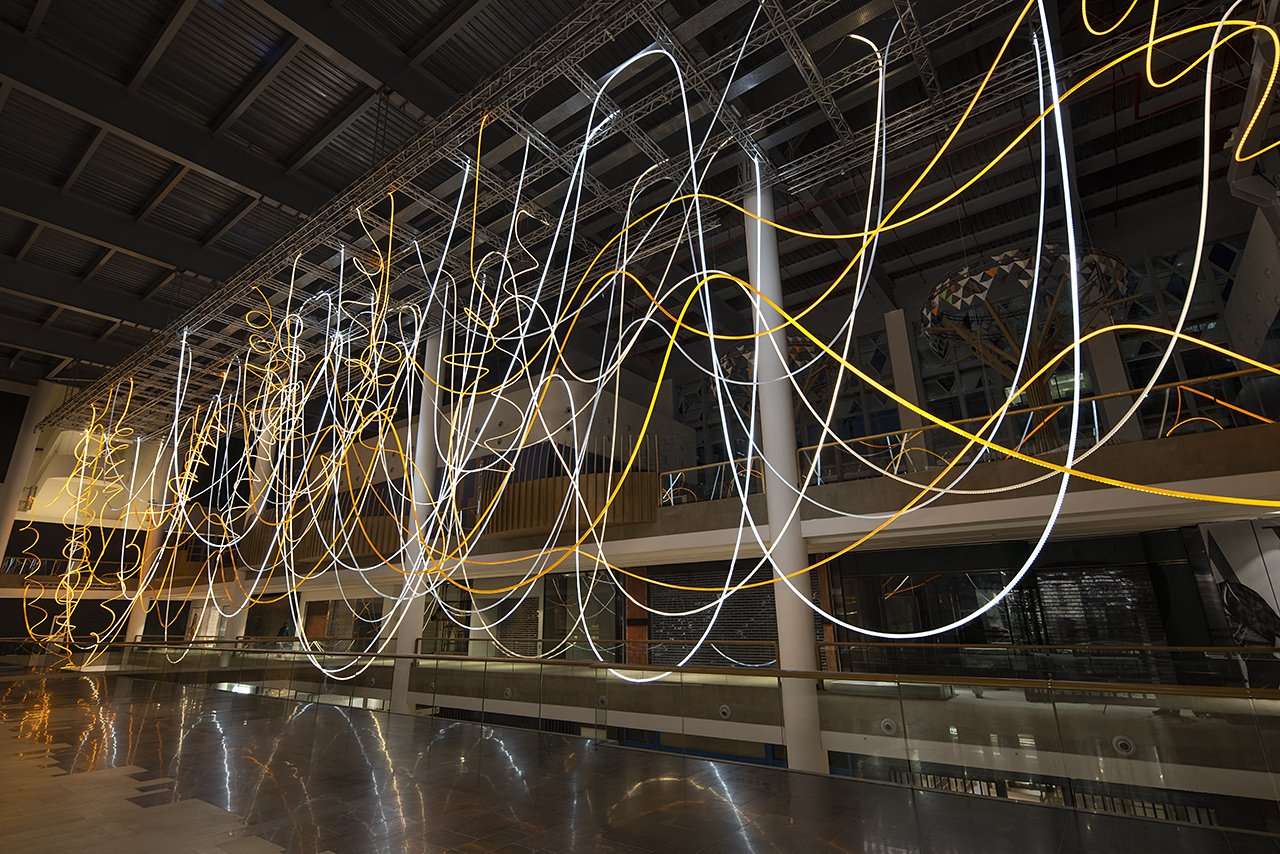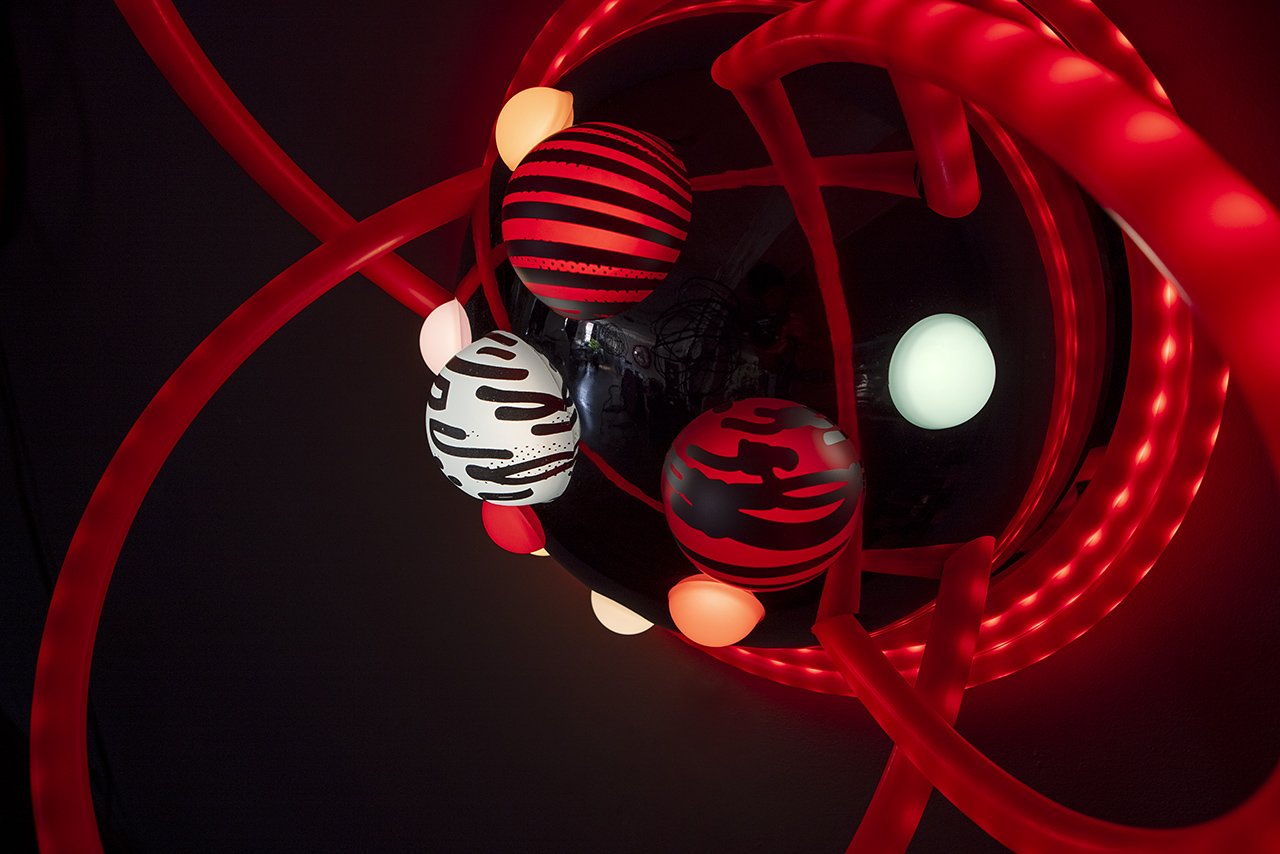A Fascinating Conversation with Grimanesa Amoros
Grimanesa Amoros is a Peruvian-American interdisciplinary artist known for large-scale light sculpture installations. Her work finds inspiration from Peruvian cultural legacies and the communities surrounding her sculptures. She has exhibited internationally in Mexico, Tel Aviv, Beijing, New York Times Square, etc. Her most recent public works include GOLDEN ARRAY (Mumbai, India); HEDERA (Brooklyn, NY); MARIPOSA (Havana, Cuba); PINK LOTUS (New York, NY); GOLDEN WATERS (Scottsdale, AZ); ARGENTUM (New York, NY); and UROS HOUSE (Times Square, NY). She has participated in many art festivals and fairs, such as The Armory Show in New York City. She has given many artist lectures, most recently at Pratt Institute (Brooklyn, NY), ArtSpace (Raleigh, NC), Sweet Briar College (Sweet Briar, VA), Corriente Alterna School of Arts (Lima, Peru), Colgate University (Hamilton, NY), and Spruill Center for the Arts (Atlanta GA). Grimanesa has been a guest speaker at TEDGlobal 2014, a recipient of the 'NEA Visual Arts Grants Fellowships 1993'. She has the distinction of being part of the 'Art In Embassies Program of the U.S.' and the Civita Institute NE Chapter Fellowship Grant. Her work has been exhibited in numerous museums, including the Ludwig Museum, CAFA Museum, Seoul National University Museum of Art, Museo Nacional de Bellas Artes de Cuba, and Katonah Museum, among many others. She also frequently is a keynote speaker on programs and panels related to feminism and women empowerment. Some recent examples include: Feminism Today with Sophia Johnson and NEYAD Women are the Future, the Future of Turkey. Her latest exhibit, SCENTIA in Bilbao, Spain, for The Wellbeing Summit, is in late May and early June. Grimanesa is currently represented at Leila Heller Gallery.
UZOMAH: How does the choice of voltage you use impact your material choices and color selection?
GRIMANESA: My projects are created from concept to realization. That is to say, the concept and visualization are completed first. The LEDs for the projects I make are entirely custom-made for the installation. Once the visuals are finalized, the LEDs and electrical hardware are ordered to match the voltage requirements of the space. This has no influence on color selection.
U: What got you into sculpture?
G: I have always been interested in sculpture. This passion was sparked by a fascination with seafoam during my childhood on the shores of Peru. During certain times of the year, the ocean would become tumultuous, whipping the foam into stiff peaks coating the shoreline. The shapes of these bubbling foam and their mysterious movement created natural sculptures that inspired my later work.
I began my career as a painter, primarily due to space constraints in NYC. However, even my paintings were heavily textured; I explored creating three-dimensional paint sculptures within the context of the composition.
U: You have noted how your father being a civil engineer, highly influenced you throughout your projects. How has your father been a significant influence in your creating process?
G: My father, who sadly passed away in 2018, did not significantly impact my creative process. However, his ethics greatly influence how I approach building the final sculpture and conducting myself when collaborating with diverse global teams.
As an engineer, my father was very precise. This attention to detail is present in everything I create. He was also a man of his word; when he promised you something, you knew you could trust my father would do it. I believe that I inherited his professionalism and his precision, qualities that inspire the teams I lead onsite.
My mother had a major impact on how I create; I would stay up late watching her create sculptural centerpieces and other arts and crafts throughout my childhood. She was the one who discovered my artistic inclinations at the age of 11.
AZURE Date: 2021 Media: LEDs, diffusion and reflective material, custom lighting sequence, electrical hardware. stainless steel. Location: UES New York, NY Credit: Photo Credits to Grimanesa Amorós Studio
U: How do you incorporate many disciplines in your projects to produce complex objects that reveal more about human understanding and how to co-exist with one another?
G: All of my work is created with space and its impact on people in mind. When considering my materials, I think about how they will occupy and live with the space. This is one of the reasons I am drawn to light, as it extends beyond the material containing it to create ephemeral spaces. Once the viewer is immersed within my piece, it becomes a connection point between the viewer, their surroundings, and the flow of visitors experiencing the work. Through this shared connection, they forge bonds and create community
GOLDEN ARRAY full night. Date: 2021 Media: LEDs, diffusive and reflective material, custom lighting sequence, electrical hardware Location: Mumbai, India Dimensions: 210 ft x 25 ft x 70 ft Credit: Photo Credits to Grimanesa Amorós Studio
U: When collaborating with another artist on a project, when do you know you have given enough artistically, and when to move back and not clash with the other artist?
G: When collaborating with anyone, I never compromise my vision, but I also conduct myself with kindness. This ensures my collaborations come to fruition smoothly and in a way that creates magic for everyone involved.
U: What are some essentials that go into designing a sculpture?
G: When creating my sculptures, some essential components include in-depth research about the project location, both architecturally and culturally. For my piece to connect with an audience, it must have been inspired by the surrounding community. Once I have a concept and a complete proposal, I begin building the installation.
LOTUS Date: 2021 Media: LEDs, diffusive and reflective material, custom lighting sequence, electrical hardware Location: New York, NY Dimensions: 24 in x 24 in x 19 in Credit: Grimanesa Amoros Studio
U: Can you describe the behind scenes of getting the sculpture from off the page into a functioning space?
G: I am onsite for each of my installations, sometimes working in extreme weather conditions, overseeing the entire process. It involves coordination, significant logistics from both sides of the teams, and, most importantly, communication.
Each sculpture is a different experience, yet attention to detail remains critical. Programming my lighting sequences is like composing a piece of music. Each note has its moment in time and space.
I often compare what I do to drawing on site. While I create renderings for installation ahead of time, the final placement of the lights and the programming of the piece depends on the physical architectural space.
U: What keeps you creating?
G: Seeing others interact with the work never ceases to amaze me. I create art that connects viewers with their own cultural heritage and architectural space, inspiring them to think about their world and how they can live more creatively. These connections are essential to my practice and give me the strength to continue sharing the magic.
It isn't an easy road. There were many times when I was younger that I felt as though I should give up, but I knew there was no other way to be or live than as an artist.
I am currently one of the few women working in light on a monumental scale. My goal is to inspire a new generation of women and artists to live creatively and pursue their dreams with love, strength, passion, and perseverance.
For more information about Grimanesa’s art and latest projects please visit her site. You can also follow her for updates on Twitter, Instagram, and Facebook.



